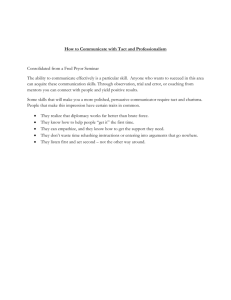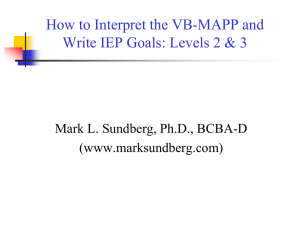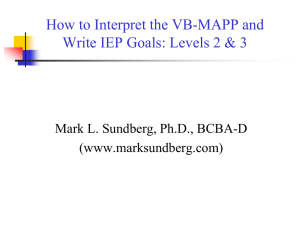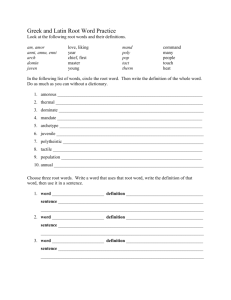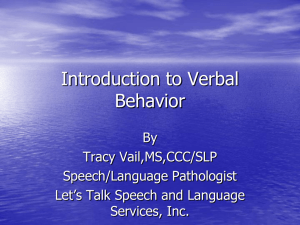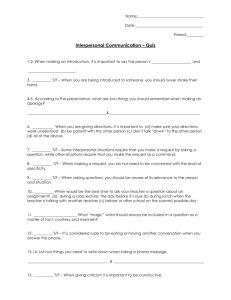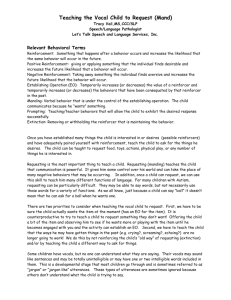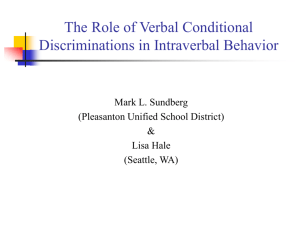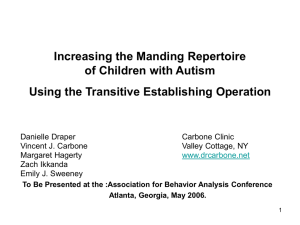Behavioral Classification of Language (Skinner)
advertisement
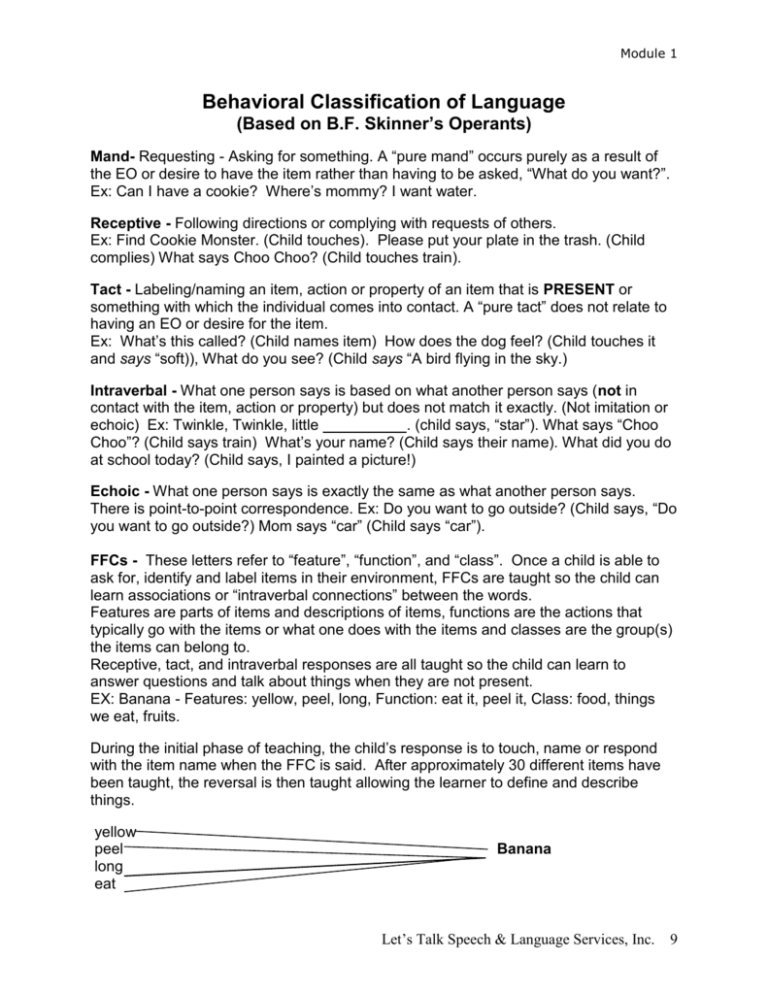
Module 1 Behavioral Classification of Language (Based on B.F. Skinner’s Operants) Mand- Requesting - Asking for something. A “pure mand” occurs purely as a result of the EO or desire to have the item rather than having to be asked, “What do you want?”. Ex: Can I have a cookie? Where’s mommy? I want water. Receptive - Following directions or complying with requests of others. Ex: Find Cookie Monster. (Child touches). Please put your plate in the trash. (Child complies) What says Choo Choo? (Child touches train). Tact - Labeling/naming an item, action or property of an item that is PRESENT or something with which the individual comes into contact. A “pure tact” does not relate to having an EO or desire for the item. Ex: What’s this called? (Child names item) How does the dog feel? (Child touches it and says “soft)), What do you see? (Child says “A bird flying in the sky.) Intraverbal - What one person says is based on what another person says (not in contact with the item, action or property) but does not match it exactly. (Not imitation or echoic) Ex: Twinkle, Twinkle, little . (child says, “star”). What says “Choo Choo”? (Child says train) What’s your name? (Child says their name). What did you do at school today? (Child says, I painted a picture!) Echoic - What one person says is exactly the same as what another person says. There is point-to-point correspondence. Ex: Do you want to go outside? (Child says, “Do you want to go outside?) Mom says “car” (Child says “car”). FFCs - These letters refer to “feature”, “function”, and “class”. Once a child is able to ask for, identify and label items in their environment, FFCs are taught so the child can learn associations or “intraverbal connections” between the words. Features are parts of items and descriptions of items, functions are the actions that typically go with the items or what one does with the items and classes are the group(s) the items can belong to. Receptive, tact, and intraverbal responses are all taught so the child can learn to answer questions and talk about things when they are not present. EX: Banana - Features: yellow, peel, long, Function: eat it, peel it, Class: food, things we eat, fruits. During the initial phase of teaching, the child’s response is to touch, name or respond with the item name when the FFC is said. After approximately 30 different items have been taught, the reversal is then taught allowing the learner to define and describe things. yellow peel long eat Banana Let’s Talk Speech & Language Services, Inc. 9 Module 1 Conversations are typically a combination of mands, tacts and intraverbals with occasional receptive responses. Example: Sam- Hi! How are you! (mand) Fred- I’m OK but I’ve been pretty busy! (intraverbal/tact) I feel like I’m ready for a vacation! (tact) How about you? (mand) Sam- Actually, I just got back from vacation! (Intraverbal). I’m ready to get back to work again! (tact) Fred- Really! (intraverbal) Where’d you go? (mand) Sam-We went to the beach for the week. (intraverbal) Do you want to see my pictures? (mand) Fred- Sure! (intraverbal) Sam- Hand me that bag over there. (mand - Sam, receptive -Fred) It has my pictures in it. (tact) Sam- This is the house we stayed in. (tact) And here’s one of the kids burying me in the sand. (tact) Fred- Did you like the house you stayed in? (mand) Sam- Yea! (intraverbal) It was great! (intraverbal) Fred- Could I get the number of the agent? (mand) I’d like to stay there too! (tact) Write it on this paper for me please. (Mand - Fred, Receptive - Sam). Let’s Talk Speech & Language Services, Inc. 10
